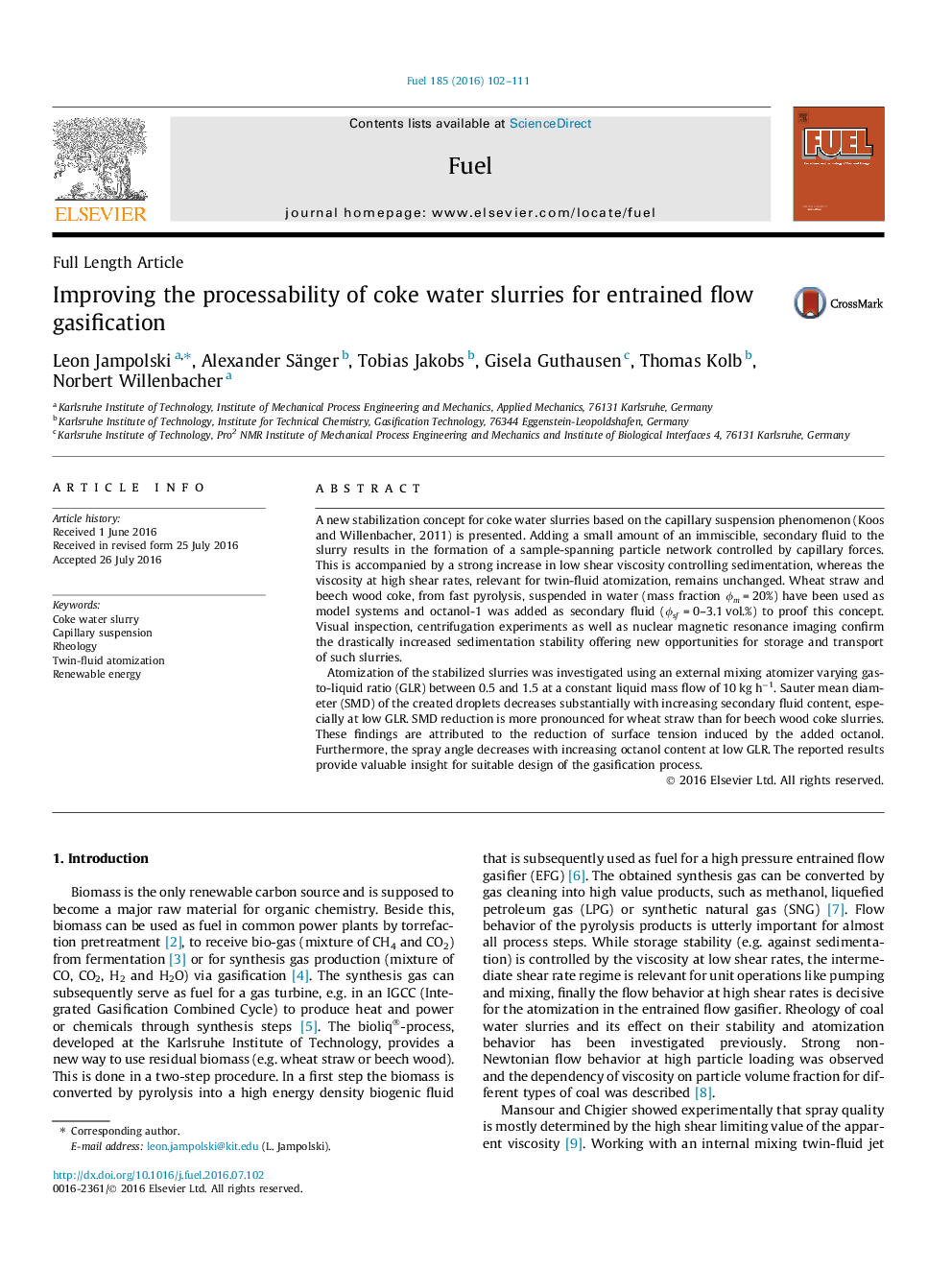| Article ID | Journal | Published Year | Pages | File Type |
|---|---|---|---|---|
| 204881 | Fuel | 2016 | 10 Pages |
A new stabilization concept for coke water slurries based on the capillary suspension phenomenon (Koos and Willenbacher, 2011) is presented. Adding a small amount of an immiscible, secondary fluid to the slurry results in the formation of a sample-spanning particle network controlled by capillary forces. This is accompanied by a strong increase in low shear viscosity controlling sedimentation, whereas the viscosity at high shear rates, relevant for twin-fluid atomization, remains unchanged. Wheat straw and beech wood coke, from fast pyrolysis, suspended in water (mass fraction ϕmϕm = 20%) have been used as model systems and octanol-1 was added as secondary fluid (ϕsfϕsf = 0–3.1 vol.%) to proof this concept. Visual inspection, centrifugation experiments as well as nuclear magnetic resonance imaging confirm the drastically increased sedimentation stability offering new opportunities for storage and transport of such slurries.Atomization of the stabilized slurries was investigated using an external mixing atomizer varying gas-to-liquid ratio (GLR) between 0.5 and 1.5 at a constant liquid mass flow of 10 kg h−1. Sauter mean diameter (SMD) of the created droplets decreases substantially with increasing secondary fluid content, especially at low GLR. SMD reduction is more pronounced for wheat straw than for beech wood coke slurries. These findings are attributed to the reduction of surface tension induced by the added octanol. Furthermore, the spray angle decreases with increasing octanol content at low GLR. The reported results provide valuable insight for suitable design of the gasification process.
